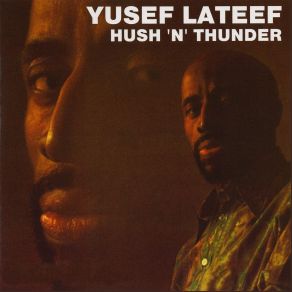Hush 'N' Thunder
Download links and information about Hush 'N' Thunder by Yusef Lateef. This album was released in 1973 and it belongs to Jazz genres. It contains 8 tracks with total duration of 38:29 minutes.

|
|
|---|---|
| Artist: | Yusef Lateef |
| Release date: | 1973 |
| Genre: | Jazz |
| Tracks: | 8 |
| Duration: | 38:29 |
| Buy it NOW at: | |
| Buy on iTunes $7.92 | |
| Buy on Amazon $7.92 | |
Tracks
[Edit]| No. | Title | Length |
|---|---|---|
| 1. | Come Sunday | 2:35 |
| 2. | The Hump | 4:44 |
| 3. | Opus, Pts. 1 & 2 | 8:01 |
| 4. | This Old Building | 2:41 |
| 5. | Prayer | 3:14 |
| 6. | Sunse | 7:53 |
| 7. | HIs Eye On the Sparrow | 5:33 |
| 8. | Destination Paradise | 3:48 |
Details
[Edit]Recorded four years after Detroit, Yusef Lateef's Hush 'N' Thunder is a restless, wildly varied set, focusing on two aspects of his composing and playing methodology that have usually been showcased separately — at least on his records. One is his R&B background, which comes off with a serious, down-home relativism that echoes both the Deep South of his upbringing and the mores trident big city versions of Chicago, Detroit, and New York. The other aspect of Lateef's musical character this album explores is his complex gift for melodic and chromatic arrangement. Lateef's penchant for compelling and unusual modal and melodic schematics as a composer is well-documented on his Prestige and Impulse sides, but has never been realized in setting where he played other people's music (he composed only one track here). Here, with the help of musicians as diverse as Ray Bryant, Kenny Barron, Bill Salter, Albert "Tootie" Heath, Kermit Moore, and Cornell Dupree, just to name a few, Lateef takes both bulls by the horns and alternates and combines them in new and unusual ways. Kenny Barron is the album's primary composer, and it is on his "The Hump" and R&B strutter that you get the first taste of Lateef's movement toward combinatory science: The front line consists of Lateef and Jimmy Owens on flügelhorn, with Barron, bassist Bob Cunnigham, and Heath on drums. What begins in standard cut time in I-IV-V progression begins to groove toward other dimensions in time sequencing in the solos. Shades of beat shifting and chameleon-like tempo are everywhere, even as the groove builds in intensity. Barron's "Prayer," a long, improvised cadenza that is as pastoral as a Vaughan Williams symphony, eventually mutates seamlessly into a blues groove driven by both Barron and Ray Bryant on piano and Salter's deeply funky bass groove. Lateef's solos on the pneumatic flute and Shennai are distorted, moaning, played from the heart of a different series of tonalities. The album closes with the meditative, slowly evolving "Destination Paradise," where Lateef's flute encounters three guitarists all engaging different modalities and playing a slow, subtle counterpoint as the rhythm section establishes a line that neither builds or dispels the tension. This album showcases Dr. Lateef heading for new musical frontiers as an interpreter and arranger and a deeply lyrical series of meditations on rhythm and melody.